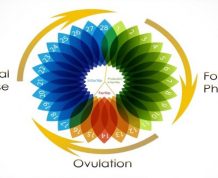What exactly is implantation bleeding? What are the symptoms and what do they mean? Many of the women who experience implantation bleeding, most of the times mistake this sign with the premenstrual cycle or even with their period, even if the bleeding is much lower in quantity and it also differs in color. So, here are two things you should know about this particular symptom. Claim Your 20 Free Pregnancy Tests – Click Here

Implantation bleeding is caused by a trophoblast; this is a tissue that develops from the egg, surrounding it completely, in the end. This way it enables it to grow and, once it invades the blood vessels, it will cause these implantation bleeding.
The entire process consists in the fact that a fertilized egg is attached to a women’s uterine lining after the fertilized egg has completed its process in the fallopian tube. This process could take up to 9 days (after the ovulation begins). Another important thing to know about this spotting is the fact that they happen about 6 to 12 days after the ovulation process.

Implantation bleeding is the first of the many symptoms women come across when trying to conceive and when conception is successful. If you are not trying to conceive and you notice abnormal bleeding, you might take into consideration that you are pregnant, so a pregnancy test should be done.

Implantation bleeding is very often confused with the onset of a period. This bleeding is also known as implantation spotting and you should know that this doesn’t look like a normal menstrual cycle because it’s more pinkish or brownish than usual. Its difference consisting of lighter cramping and bloating and a shorter duration than a normal menstrual cycle. If this ever happens to you, then you should consider linking it to the egg implantation.










Comments